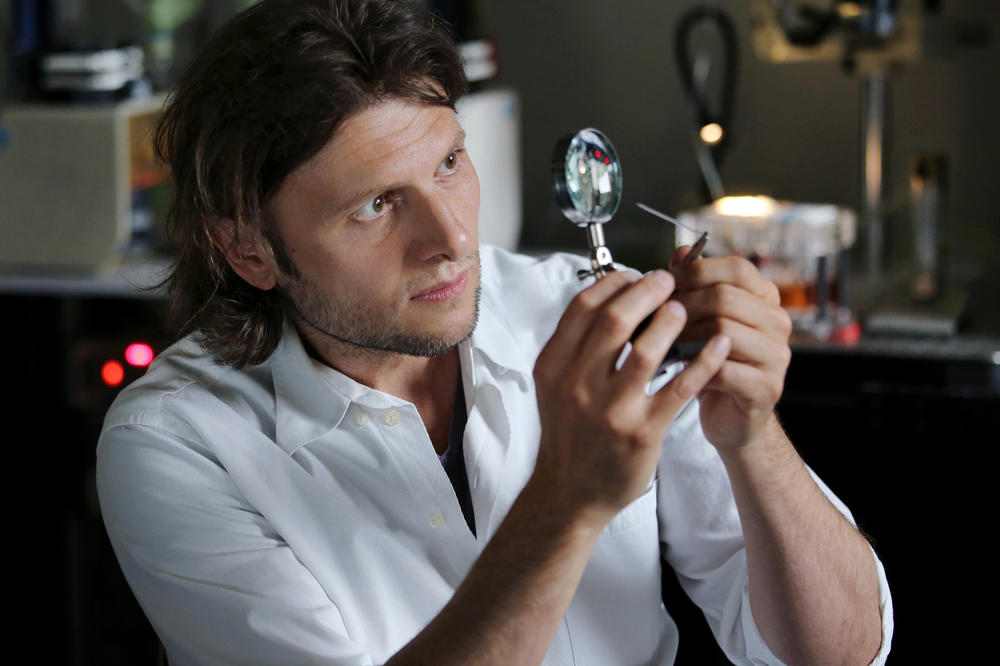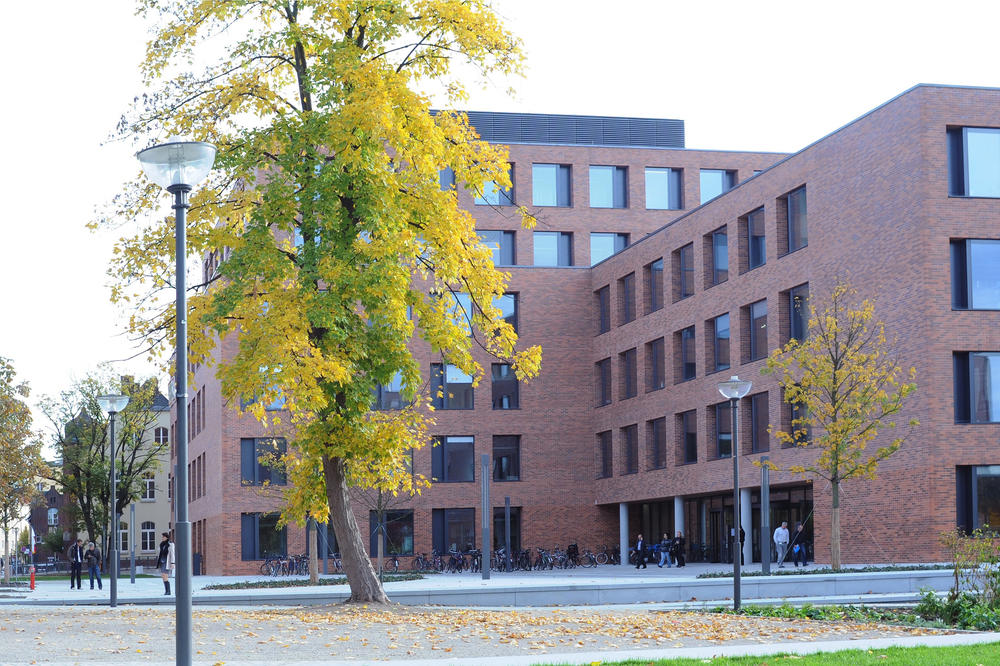Neuroscience in Berlin – A Matter of Nerves
10 years of NeuroCure: Dietmar Schmitz, spokesperson for the NeuroCure Cluster of Excellence, talks about interdisciplinary cooperation and the translation of scientific findings into new therapies.
Dec 01, 2017
Dietmar Schmitz is spokesperson for the NeuroCure Cluster of Excellence.
Image Credit: Pablo Castagnola
It the NeuroCure Cluster of Excellence, scientists investigate ways of improving the outlook for patients suffering from neurological and psychiatric disorders. A central concern of the interdisciplinary group at Charité – Universitätsmedizin Berlin, a jointly operated medical school of Humboldt-Universität and Freie Universität, is the application of pure research insights to clinical practice. As a research group under the German Excellence Initiative, with both university and nonuniversity partners, NeuroCure helps achieve a better understanding of disease mechanisms with the ultimate aim of developing effective therapies and new diagnostic practices. Dietmar Schmitz, spokesperson of the Cluster of Excellence, a professor of cellular and molecular neurobiology and director of the Neuroscience Research Center at Charité, looks back.
Professor Schmitz, 10 years ago the interdisciplinary consortium was founded and the NeuroCure Cluster of Excellence was given the go-ahead. What has happened since then?
A great deal! What I am very pleased about, of course, is that NeuroCure has attracted some amazing scientists to Berlin: there have been around 25 new appointments, from heads of junior research groups to junior and senior professors. The relationships and cooperation between fundamental researchers and clinicians is very good. The new research building, Charité CrossOver, affords us modern research and teaching facilities and ideal conditions for translating pure research findings into clinical practice. Experts from all over the world are keen to join us.
What is Berlin’s reputation in neuroscience around the world?
Berlin is in many respects attractive for the particular advantages of its location. There are several universities, Charité and many nonuniversity institutions which permit excellent networking within the sciences. Thanks to all our partners, NeuroCure has been able to build a network that harbors great potential for new ideas and their implementation. This attracts neuroscientists from all over the globe. We have very high candidate numbers for our junior researcher programs and our international doctoral program in Medical Neurosciences is particularly in demand.
What part does the Cluster of Excellence play in making Berlin attractive to neuroscientists?
In my opinion the Cluster of Excellence has added weight to the Berlin neuroscience scene. Berlin has worked its way to becoming a top-level neuroscience research location, which one sees above all in the quality of teaching, the increase in numbers of visiting scientists, and the emergence of new, interesting projects such as for example the Einstein Center for Neurosciences (ECN). We would like to create closer ties through the center with subdisciplines and raise the profile of the research location even higher in international terms so that we can train junior researchers to the very highest standards.
Interview by Linda Faye Tidwell.
What brought you to Berlin?
After studying in Cologne, I came to Berlin shortly after reunification to study and do research at Charité. Then, following several years’ research in the U.S., I returned in 2003. As one of the first institutions in Germany to do so, Charité had just introduced junior professorships at that time. Along with my fundamental research colleagues Achim Kramer and Christian Spahn, I was one of the first cohort of young professors at Charité. Compared to the state of neuroscience today, the scene was quite simple back then. NeuroCure and other project structures – such as the German Center for Neurodegenerative Diseases set up in 2009 – helped bring about this great ambiance we have today.
What is the main driver in your work?
I want to investigate disease and develop effective therapeutic measures. Additionally, the background to work is stimulating: I enjoy the discussions with my Berlin colleagues and the discourse here in general. I know that we cannot arrive at all the answers, but even small steps forward motivate me in my daily work. And part of this is the constant searching for answers. It is the many small observations that occur in various laboratories that drive forward the major questions posed by brain research. In order to understand unknown, complex processes, one has to be alert to the very broad range of small details, even if, according to our current understanding in a given context – the scientific status quo – they make little sense at first sight. For that reason it is very important to observe experiments closely and be open to unexpected results. Often, the brain is something that is too complex to fit our hypotheses.
Could you name an example of a successful translation – or application?
There are many interesting studies that are highly promising, and one currently very exciting topic is in connection with the autoimmune disorders that attack the nervous system. It has been established that many people with psychoses or memory disorders are in fact suffering from autoimmune-triggered inflammation. Certain antibodies play a significant role here: they destroy specific attachment sites in the brain – so-called NMDA receptors. Currently, we are working with scientists from the German Center for Neurodegenerative Diseases to investigate the pathophysiological changes caused by these antibodies. If antibodies are indeed involved in the emergence of the clinical picture, new treatment options might suggest themselves, such as the possibility of keeping the inflammation in check. There has already been considerable progress in the field of research into strokes and in deep brain stimulation for the treatment of movement disorders, where translation from pure research has been successful.


